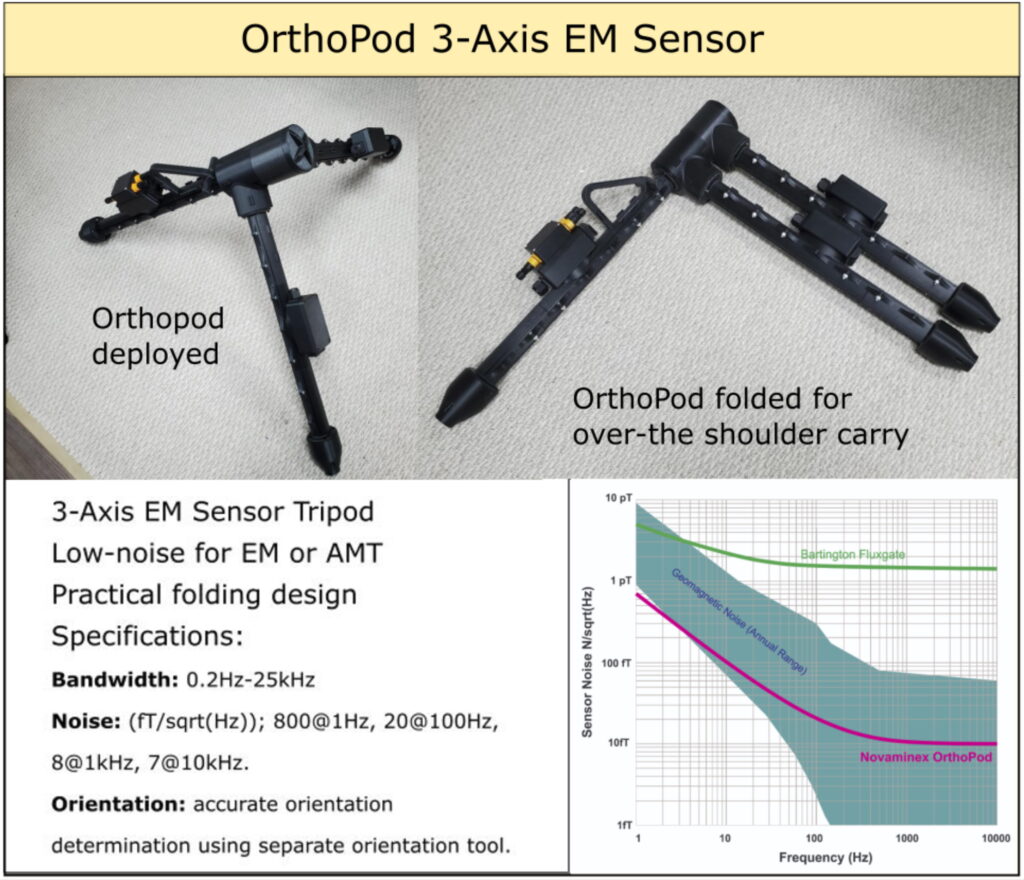NovEM 3-axis EM System
Novaminex is developing a number of devices and processing methods aimed at making high quality EM surveys more practical for array-style application. While IP-Resistivity surveys evolved from small dipole count fixed arrays along profiles to full 3D arrays about 20 years ago the same has not happened for EM. The main reason for this is the cost of the sensors at $50,000 + for a low-noise EM sensor set as compared to ~$100 for electrodes and a preamp. The NovaEM project aims to make array EM more practical by designing a low-noise 3-axis EM sensor assembly, the orthoPod, that is easy to deploy and can be made at a small fraction of the cost of devices of similar performance.
Good quality 3-axis EM requires accurate knowledge of the orientation of the individual components of the sensor set. Determining accurate azimuth can be particularly difficult in areas of high magnetic variability. Novaminex is developing the companion Arrow tool. The stand-alone hand-held device is used to measure the absolute orientation of the orthoPod to allow the data to be accurately “rotated” to the Cardinal directions.
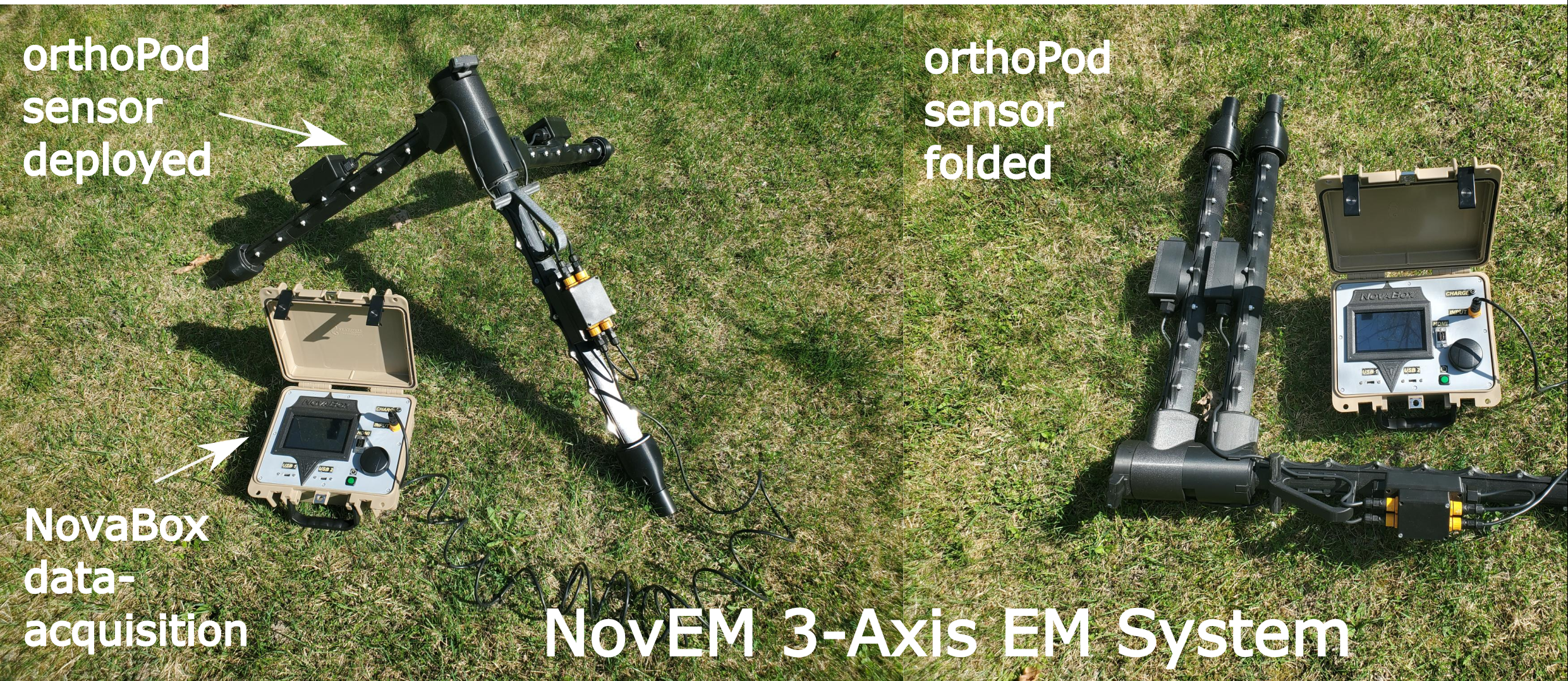
The orthoPod is a 3-axis tripod with low-noise EM sensors integral to each leg. The 7kg device folds flat to easily carry over the shoulder and is deployed with the legs at right angles in seconds. During setup the focus is on achieving a stable footing as there is no requirement to point or level the device. Orientation of the device is captured by registering the separate hand-held Arrow tool with a receptacle on the orthoPod. The device provides 3-channel output on a cable to a data logging device or other receiver.
Above 7Hz the orthoPod provides noise performance much better than most HTS Squid systems with a noise floor of 7fT/sqrt(Hz) at 10kHz. This makes it a practical EM sensor for controlled source or rapid AMT surveys (8Hz-20kHz).
NovEM 3-axis EM System
Novaminex is developing a number of devices and processing methods aimed at making high quality EM surveys more practical for array-style application. While IP-Resistivity surveys evolved from small dipole count fixed arrays along profiles to full 3D arrays about 20 years ago the same has not happened for EM. The main reason for this is the cost of the sensors at $50,000 + for a low-noise EM sensor set as compared to ~$100 for electrodes and a preamp. The NovaEM project aims to make array EM more practical by designing a low-noise 3-axis EM sensor assembly, the orthoPod, that is easy to deploy and can be made at a small fraction of the cost of devices of similar.
Good quality 3-axis EM requires accurate knowledge of the orientation of the individual components of the sensor set. Determining accurate azimuth can be particularly difficult in areas of high magnetic variability. Novaminex is developing the companion Arrow tool. The stand-alone hand-held device is used to measure the absolute orientation of the orthoPod for to allow the data to be accurately “rotated” to the Cardinal directions.
The orthoPod is a 3-axis tripod with low-noise EM sensors integral to each leg. The 7kg device folds flat to easily carry over the shoulder and is deployed with the legs at right angles in seconds. During setup the focus is on achieving a stable footing as there is no requirement to point or level the device. Orientation of the device is captured by registering the separate hand-held Arrow tool with a receptacle on the orthoPod. The device provides 3-channel output on a cable to a data logging device or other receiver.
Above 7Hz the orthoPod provides noise performance much better than most HTS Squid systems with a noise floor of 7fT/sqrt(Hz) at 10kHz. This makes it a practical EM sensor for controlled source or rapid AMT surveys (8Hz-20kHz).
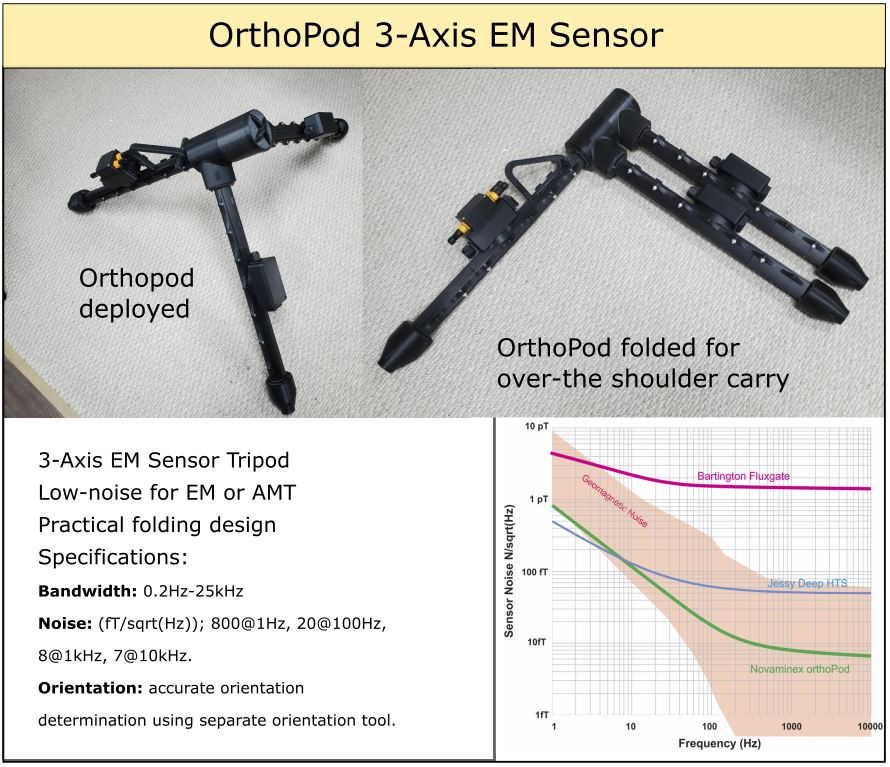
The NovaBox is a low-cost 3-channel data recorder for acquisition and logging of the time series from the orthoPod or any other voltage source.
Specifications:
- Channels: 3 differential 24bit @ 50,000 samples per second simultaneously sampled
- Timing: GPS disciplined
- Input Impedance: 200k ohms
- Data Capacity: weeks
- Internal Battery Life: 12 hours
- Weight: 3.1kg
- Interface: Daylight readable display, remote control

Good quality 3-axis EM requires accurate knowledge of the orientation of the individual components of the sensor set. Determining accurate azimuth can be particularly difficult in areas of high magnetic variability. Novaminex is developing the companion Arrow tool. The stand-alone hand-held device is used to measure the absolute orientation of the orthoPod for to allow the data to be accurately “rotated” to the Cardinal directions.

The orthoPod is a 3-axis tripod with low-noise EM sensors integral to each leg. The 7kg device folds flat to easily carry over the shoulder and is deployed with the legs at right angles in seconds. During setup the focus is on achieving a stable footing as there is no requirement to point or level the device. Orientation of the device is captured by registering the separate hand-held Arrow tool with a receptacle on the orthoPod. The device provides 3-channel output on a cable to a data logging device or other receiver.
Above 7Hz the orthoPod provides noise performance much better than most HT Squid systems with a noise floor of 7fT/sqrt(Hz) at 10kHz. This makes it a practical EM sensor for controlled source or rapid AMT surveys (8Hz-20kHz).

NovaBox Data Recorder
The NovaBox is a low-cost 3-channel data recorder for acquisition and logging of the time series from the orthoPod or any other voltage source.
Specifications:
- Channels: 3 differential 24bit @ 50,000 samples per second simultaneously sampled
- Timing: GPS disciplined
- Input Impedance: 200k ohms
- Data Capacity: weeks
- Internal Battery Life: 12 hours
- Weight: 3.1kg
- Interface: Daylight readable display, remote control
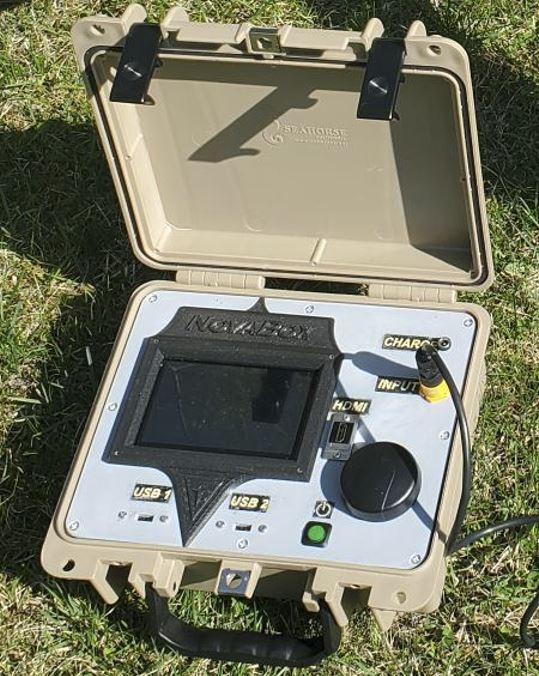
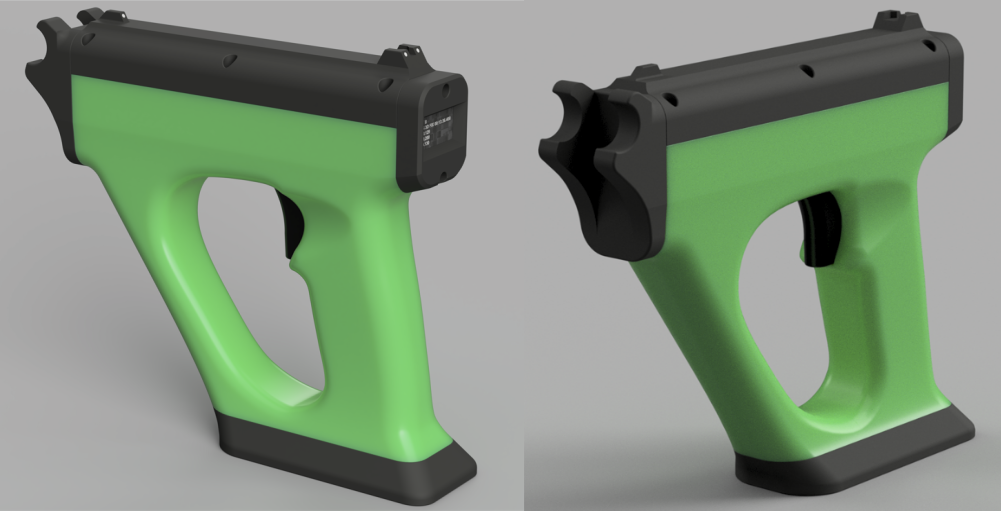
NovaEM Arrow Tool
Good quality 3-axis EM requires accurate knowledge of the orientation of the individual components of the sensor set. Determining accurate azimuth can be particularly difficult in areas of high magnetic variability. Novaminex is developing the companion Arrow tool. The stand-alone hand-held device is used to measure the absolute orientation of the orthoPod for to allow the data to be accurately “rotated” to the Cardinal directions.
NovaEM OrthoPod
The orthoPod is a 3-axis tripod with low-noise EM sensors integral to each leg. The 7kg device folds flat to easily carry over the shoulder and is deployed with the legs at right angles in seconds. During setup the focus is on achieving a stable footing as there is no requirement to point or level the device. Orientation of the device is captured by registering the separate hand-held Arrow tool with a receptacle on the orthoPod. The device provides 3-channel output on a cable to a data logging device or other receiver.
Above 7Hz the orthoPod provides noise performance much better than most HT Squid systems with a noise floor of 7fT/sqrt(Hz) at 10kHz. This makes it a practical EM sensor for controlled source or rapid AMT surveys (8Hz-20kHz).
